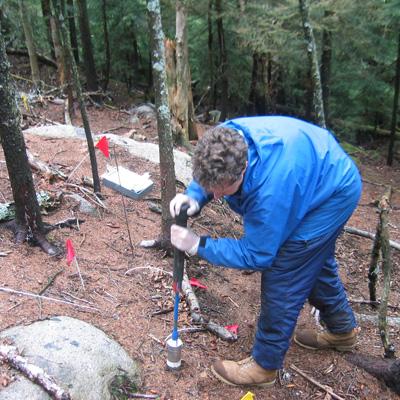Does Elevated Nitrogen Deposition Induce Phosphorus Deficiency in North Temperate Forest Ecosystems?

As elevated nitrogen deposition increases soil nitrogen available to plants, phosphorus may become less available in forested ecosystems. Research at the Bear Brook Watershed in Maine has suggested that experimental inputs of nitrogen have increased nitrogen availability, decreased fine root biomass, depleted soil base cations such as calcium and magnesium, and increased mobility of certain forms of soil aluminum with which phosphorus is often associated, potentially mobilizing phosphorus at the same time.
This research builds on a 2002 NSRC project Does Elevated Nitrogen Deposition Alter Fine Root Growth, Metabolism, and Turnover in North Temperate Ecosystems? conducted at the Bear Brook Watershed in Maine, the Harvard Forest in Massachusetts, and Mt. Ascutney in Vermont. This current project added a suite of measurements to define phosphorus dynamics in the three forest ecosystems receiving long-term experimental nitrogen treatments. NSRC researchers collected additional soil samples from the rhizosphere (plant root zone) to contrast with bulk soil cores from soils not directly affected by roots. In the laboratory, they studied the chemistry and microbes found in the additional soil samples and used a procedure called fractionation (separation into smaller components) to study phosphorus in the samples.
Findings demonstrated important differences in the chemistry of bulk soil and rhizosoil and that fine root chemistry tracked the character of soil chemistry for major base cations as well as for aluminum. The fractionation procedure showed some evidence for the depletion of phosphorus associated with soil aluminum.
